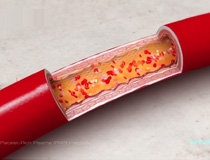Medical procedures regarding blood have advanced significantly over time. While doctors used to turn to bloodletting as a method to cure an illness or disease, professionals are now turning to platelet-rich (PRP) injections as a method of healing.
Platelets, which are also known as thrombocytes, are formed from a person’s bone marrow and help with clotting. These prevent us from bleeding out and are essential for healing physical wounds.
Meanwhile, plasma makes up 55% of the body’s total blood. It is a light yellow liquid that is mostly water, but it also contains a small percentage of vital proteins. Plasma has four crucial bodily functions, which include maintaining blood pressure and volume, supplying critical proteins that help with immunity and clotting, carrying important electrolytes to the muscles and supporting cell function by making sure the body contains a proper pH balance.
Plasma and platelets are both essential components of a person’s blood. This is why PRP is so effective when it comes to helping treat several conditions, such as:
- Arthritis
- Osteoarthritis
- Cartilage damage
- Hip injuries
- Trochanteric bursitis
- Ligament tears
- Knee sprains
- Hamstring muscles
- Tendon tears
- Tendonitis
- Achilles tendonitis
- Gluteal tendonitis
- Patellar tendonitis
What is PRP Injection?
A PRP injection is similar to stem cell treatment in that it helps to stimulate body tissue repair through the injection of platelets from a patient’s own blood into their body. It is a nonsurgical and regenerative treatment option that helps to heal patients with chronic muscle, tendon, or ligament injuries. It works by stimulating platelet activation. This then allows the injured body part to heal since it is imitating the body’s natural response to an injury.
Typically, a PRP injection may be recommended to a patient if other treatment options have failed. If the patient’s symptoms do not improve through rest, activity modification, or physical therapy, then they may be recommended a PRP injection.
PRP helps patients with tendinitis by helping to regenerate the strength and function of the body’s injured tissue. With osteoarthritis, new collagen can develop as a result of an injection.
The Process of a PRP Injection
A PRP injection is an outpatient procedure, which means a patient will be treated and able to go home the same day.
This treatment option is accomplished first by attaining the patient’s blood. Next, the red blood cells are then separated from the white blood cells and platelets by being spun in a centrifuge, a device which separates these components. This has the effect of concentrating the platelets. Finally, the platelets are injected into the patient’s injured body tissue, sometimes with the help of an ultrasound. Platelets help with clotting, but they also contain growth factors, which play a huge part in accelerating the healing process of the injured body part.
For the next day or two following the procedure, the patient may experience mild pain or irritation at the injection site. Post-procedure care simply requires a patient to rest and apply ice or a cold compress to the site of injection to reduce any pain they have.
PRP injections have very few risks and complications. Still, a patient may experience infection, tissue damage, increased pain at the injection site, or injury to neighboring nerves.
How Much are PRP Injections?
A PRP injection can cost anywhere from $500 to $2500, and depending on the extent of the patient’s injury, they can require multiple injections. Unfortunately, there are very few insurance companies that are willing to cover this cost since most consider PRP injections experimental.
Do PRP Injections Work?
PRP is still a relatively new technique and research on it is still very few compared to other medicinal practices, therefore the effectiveness of it is not entirely known. However, the studies that have been completed suggest PRP injections are beneficial for certain types of conditions.
According to one scientific study, PRP injections were effective for 60% of knee osteoarthritis patients, which included 517 patients. It revealed that the severity of the patient’s condition affected the injection’s overall effectiveness, meaning it was more effective for those whose knee osteoarthritis was milder, while it was less effective for those with severe knee osteoarthritis.
Another scientific study revealed that patients with knee osteoarthritis could delay their need for a knee replacement through PRP injections. This same study shows that nearly 75% of these PRP patients delay their knee replacement by more than a year and a half, and the average PRP patient delays the procedure by more than five years, past the five-year checkup. This means that for most patients, knee surgery was either temporarily or permanently delayed, portraying the effectiveness of PRP injections for patients with knee osteoarthritis.
Overall, the effectiveness of PRP as a treatment seems to vary depending on the condition being treated and the intensity of it.
Contact Us Today
Chicago Cell Therapy and Regenerative Medicine offers advanced and specialized treatment for various hip conditions. Explore new and effective options to treat orthopedic injuries.
Contact us today if you think you would like to receive specialized care for your hip or joint injury.


 Thanks a lot for getting my hip right. Looking forward to a full recovery and a great season. Thanks again for everything.
Thanks a lot for getting my hip right. Looking forward to a full recovery and a great season. Thanks again for everything.










